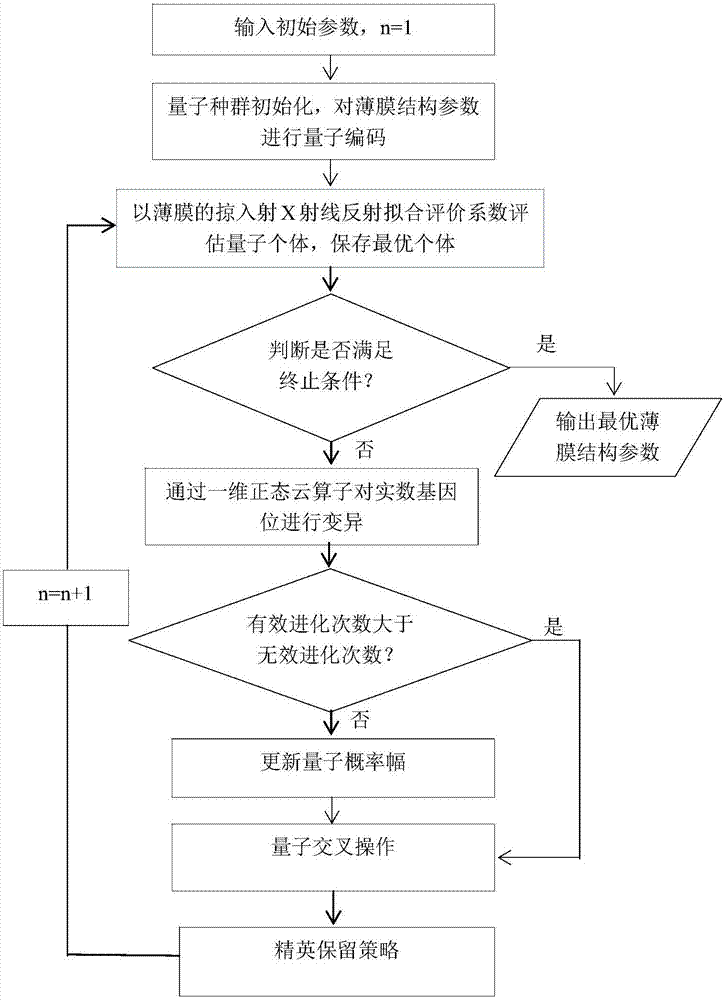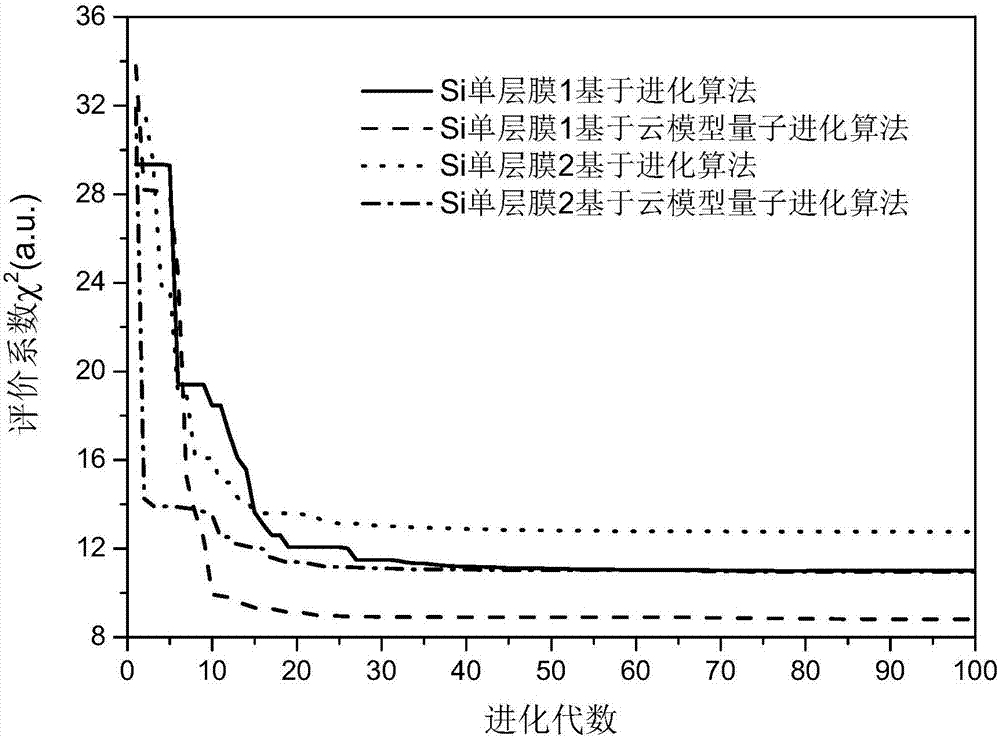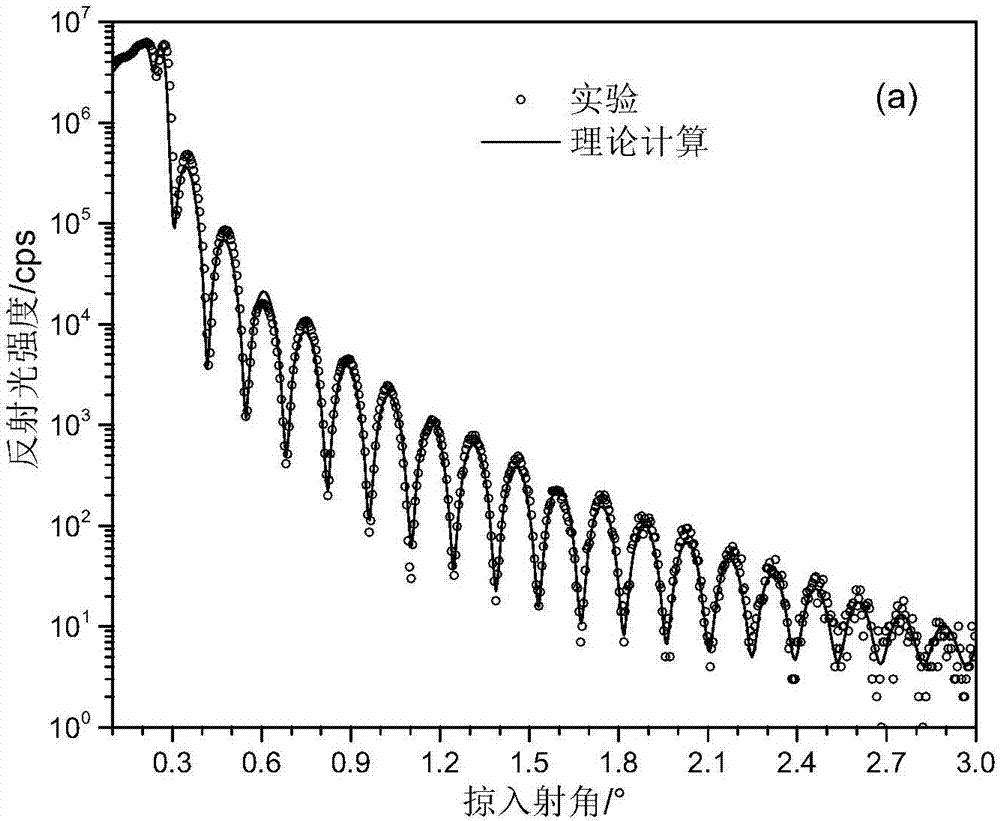Optical thin film characterization method based on cloud-model quantum evolutionary algorithm
A quantum evolutionary algorithm, optical thin film technology, applied in computational models, biological models, calculations, etc., can solve the problems of large group size, slow convergence speed, complex calculation process, etc. Combined solution with high accuracy
- Summary
- Abstract
- Description
- Claims
- Application Information
AI Technical Summary
Problems solved by technology
Method used
Image
Examples
Embodiment Construction
[0020] As mentioned above, in view of the deficiencies in the prior art, the inventor of this case has been able to propose the technical solution of the present invention after long-term research and a lot of practice, which is mainly a cloud model quantum evolution algorithm (CQEA), based on grazing The characterization method of single-layer film and multi-layer film fitted by X-ray reflection (GIXR) has the advantages of small population size, fast convergence speed and high fitting solution accuracy in the solution process, and solves the problems in the prior art. In the solution process based on evolutionary algorithm, there are problems such as large population size, slow convergence speed, low solution precision and complex calculation process. The technical solution of the present invention will be further explained as follows.
[0021] Briefly speaking, the optical thin film characterization method based on cloud model quantum evolution algorithm of the present inve...
PUM
 Login to View More
Login to View More Abstract
Description
Claims
Application Information
 Login to View More
Login to View More - R&D
- Intellectual Property
- Life Sciences
- Materials
- Tech Scout
- Unparalleled Data Quality
- Higher Quality Content
- 60% Fewer Hallucinations
Browse by: Latest US Patents, China's latest patents, Technical Efficacy Thesaurus, Application Domain, Technology Topic, Popular Technical Reports.
© 2025 PatSnap. All rights reserved.Legal|Privacy policy|Modern Slavery Act Transparency Statement|Sitemap|About US| Contact US: help@patsnap.com



